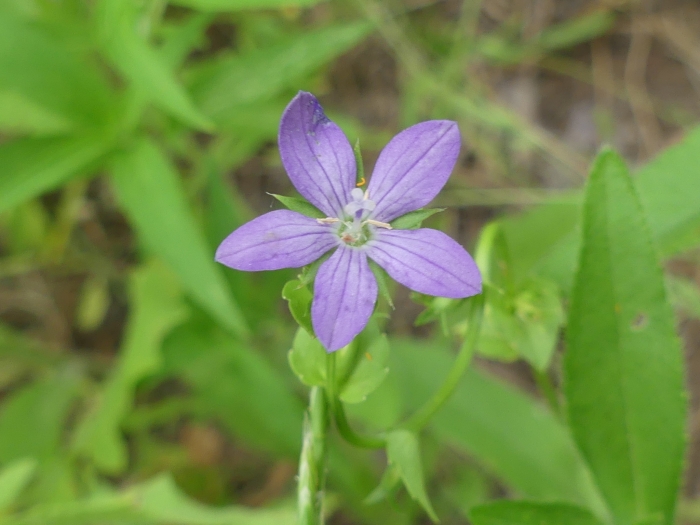Small Venus’ Looking-Glass
(Triodanis biflora)
Small Venus’ Looking-Glass (Triodanis biflora)
/
/

Morgan Hay
CC BY 4.0
Image By:
Morgan Hay
Recorded By:
Copyright:
CC BY 4.0
Copyright Notice:
Photo by: Morgan Hay | License Type: CC BY 4.0 | License URL: http://creativecommons.org/licenses/by/4.0/ | Rights Holder: Morgan Hay | Publisher: iNaturalist | Date Created: 2019-04-30T17:02:06-07:00 |

























Estimated Native Range
Summary
Triodanis biflora, commonly known as Small Venus’ Looking-glass, is an annual herb native to a variety of habitats including open woodlands, grasslands, and roadsides across the Americas. It is a small plant, usually reaching 6-12 inches (15-30 cm) in height, with a slender stem and thin, serrate, sessile leaves arranged alternately. The solitary, bell-shaped flowers are blue or purple, blooming from late spring to early summer and are quite showy despite the plant’s diminutive size. The fruit is a capsule that splits open when mature, releasing the seeds.
Small Venus’ Looking-glass is valued for its delicate appearance and is often used in wildflower gardens and naturalized areas. It is a low-maintenance plant that prefers full sun and can tolerate a range of soil types, provided they are well-drained. It is drought-tolerant once established and does not require frequent watering. While it is not commonly available in nurseries, it can be grown from seed and is a charming addition to informal plantings and meadow gardens. It has no major disease or pest problems, but can self-seed prolifically under ideal conditions, which should be considered when planting.CC BY-SA 4.0
Small Venus’ Looking-glass is valued for its delicate appearance and is often used in wildflower gardens and naturalized areas. It is a low-maintenance plant that prefers full sun and can tolerate a range of soil types, provided they are well-drained. It is drought-tolerant once established and does not require frequent watering. While it is not commonly available in nurseries, it can be grown from seed and is a charming addition to informal plantings and meadow gardens. It has no major disease or pest problems, but can self-seed prolifically under ideal conditions, which should be considered when planting.CC BY-SA 4.0
Plant Description
- Plant Type: Herb
- Height: 0.5-1.5 feet
- Width: 0.5-1 feet
- Growth Rate: Moderate, Rapid
- Flower Color: Blue, Pink, Purple, White
- Flowering Season: Spring, Summer
- Leaf Retention:
Growth Requirements
- Sun: Full Sun
- Water: Low
- Drainage: Fast
Common Uses
Border Plant, Butterfly Garden, Deer Resistant, Drought Tolerant, Low Maintenance
Natural Habitat
Native to open woodlands, grasslands, and roadsides across the Americas
Other Names
Common Names: Clasping Venus’ Looking Glass, Purple Venus’ Looking Glass
Scientific Names: , Triodanis biflora,
GBIF Accepted Name: